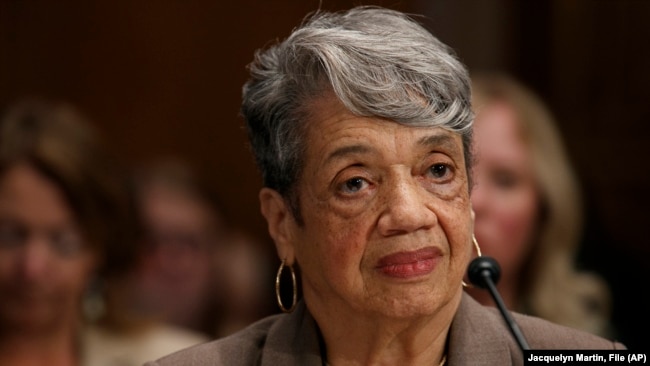AUDIO
Black Women Mathematicians Receive Congressional Medals for Space Program Work

The United States Congress has honored four women known as the “hidden figures” of the space race with its highest civilian award.
The Congressional Gold Medal was presented Wednesday to the families of Katherine Johnson, Dorothy Vaughan, Mary Jackson and Christine Darden at the U.S. Capitol. Only Darden is still living. The 82-year-old watched the ceremony from her Connecticut home.

Lawmakers recognized the four Black mathematicians for their critical work early in the space program.
They also presented a medal to all the women who worked as mathematicians, engineers and "human computers" in the American space program from the 1930s to 1970s.
Margot Lee Shetterly wrote the 2016 book Hidden Figures about the Black women mathematicians who supported the space program in the 1960s. It was made into a movie of the same name in 2017.
"By honoring them, we honor the very best of our country's spirit," Shetterly said at the ceremony.

The early space program employed hundreds of women to work as mathematicians at what is now NASA's Langley Research Center in Virginia. But, the Black mathematicians were not permitted to work with the white mathematicians because of racial separation policies at the time. The Black researchers’ work went unrecognized for years.
The team used pencils, slide rulers and mechanical calculating machines to calculate the paths of rockets and orbiters in the atmosphere and in space. The path is called the trajectory.
“Our office computed all the trajectories,” Katherine Johnson told The Virginian-Pilot newspaper in 2012. “You tell me when and where you want it to come down, and I will tell you where and when and how to launch it,” she explained.

In 1961, Johnson did trajectory research for the Freedom 7 Mission, the first to carry an American into space. The next year, she checked the calculations made by a new NASA computer for astronaut John Glenn’s planned orbits around the planet.
John Glenn did not trust the new computer. Days before the launch, he told NASA, “Get the girl to check the numbers.” John Glenn become the first American to orbit the Earth in 1962.
Johnson was awarded the Presidential Medal of Freedom in 2015 – the nation's highest civilian honor. Her work at NASA helped open doors for many other women to take part in the space program.
Dorothy Vaughan rose to become NASA's first Black female supervisor. Mary Jackson was NASA's first Black female engineer. And Christine Darden is best known for her sonic boom research.
_________________________________________
Words in This Story
figure – n. a digit representing an amount (as of money earned or points scored) also, a bodily shape or form especially of a person
calculate – v. to find (a number, answer, or the like) by using mathematical processes
sonic boom - n. a loud explosive noise caused by the shock wave from an aircraft traveling faster than the speed of sound.
https://learningenglish.voanews.com/a/black-women-mathematicians-receive-congressional-medals-for-space-program-work/7790975.html